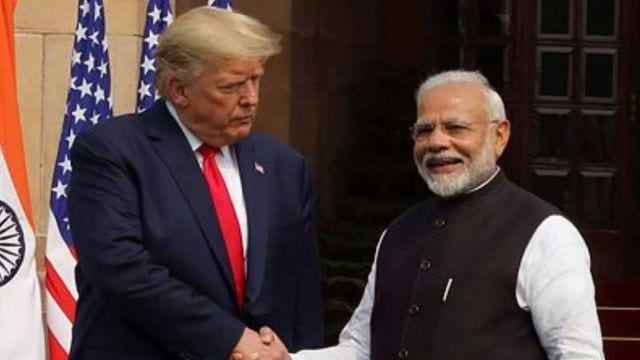
By Abhinand Siddharth S
Over the past few months, the sanctions landscape around India’s Russian oil purchases has shifted decisively. On August 6, the White House issued an Executive Order adding a further 25 per cent tariff on Indian imports due to New Delhi’s continuing trade in Russian crude, taking the total duties to 50 per cent. Days later, Brussels adopted its 18th Russian package, restricting EU imports of fuels refined from Russian crude in third countries. On October 18, the UK expanded designations and compliance obligations in ways that directly affect counterparties and service providers dealing with India-linked energy trades. Last week, the US administration imposed sanctions on major oil companies, Rosneft and Lukoil.
These measures do not solely target Russia. India has emerged as the biggest buyer of discounted seaborne Russian crude in the aftermath of Moscow’s invasion of Ukraine. The US decisions influence India’s access to Western markets and services by requiring conformity with unilateral sanctions, thereby impacting New Delhi’s decisions over energy security.
The current wave of measures is best understood as domestic rules with an outward effect. Import bans, designations and tariff surcharges may be lawful within national jurisdictions. But when they are calibrated to influence another state’s energy choices, they narrow policy autonomy while remaining formally domestic. The EU’s rule treats fuels refined in third countries as presumptively restricted unless origin is disproved; the US tariff links overall market access to India’s energy sourcing; and the UK listing exports compliance risk into Indian banking, insurance and shipping chains. This episode is, therefore, not just about tariffs or customs paperwork; it is about how power is exercised through law.
International trade law was designed to guard against unilateral overreach. Under the GATT, Article XI constrains quantitative restrictions such as blanket import bans, Article I requires most-favoured-nation treatment, and Article II caps tariffs at a member’s bound rates. The national-security clause in Article XXI is not automatic: In Russia—Traffic in Transit (2019), the WTO panel held that Article XXI is reviewable, must be invoked in good faith, and is tied to a genuine “war or other emergency in international relations” — not a catch-all to bypass obligations. That reasoning is directly relevant when Russia–Ukraine measures are projected onto India’s otherwise lawful trade.
Beyond trade rules lies the UN Charter’s architecture. International law protects each state’s domaine réservé, the space for every state to set policy on its internal and external affairs, including its policy on energy and commerce. In the landmark case in 1986, Nicaragua vs United States, the ICJ articulated the rule against coercive intervention. Measures that condition market access on India abandoning lawful external trade sit uncomfortably with that principle: the form remains domestic, but the purpose is to induce a policy shift abroad by threatening economic harm.
In the short term, India could challenge the US surcharge as exceeding bound rates and test the EU rule as a de facto ban on lawful non-Russian goods refined in India. While Washington may invoke Article 21 of GATT, that deals with exceptions related to national security, the Transit Case makes clear that panels can review the good-faith link to a genuine emergency. With the UK, any WTO path is narrower because financial listings fall primarily in the services/financial space and will likely meet a security-exception defence. The advantage is to establish a rules-based record that disciplines overreach; the drawback is slow timelines and a paralysed Appellate Body.
India could also seek a sanctions waiver, as it did in 2018 when the US had imposed sanctions on Iran, citing energy security and stabilising oil markets. This is relevant now due to stalled US-India trade talks on tariffs and market access. However, while negotiated waivers offer short-term relief, they rely on US goodwill and concessions.
In the long run, India can reduce its reliance on the US dollar, as seen in the 2023 India-UAE agreement to trade in rupees. Expanding local currency trade via “minilaterals” like BRICS and trilaterals such as Russia-India-China, and India-Brazil-South Africa, could protect India from dollar-based sanctions. However, de-dollarisation is gradual, and challenges like liquidity and convertibility may limit its short-term scale.
Indian policymakers might consider legislation like the EU’s Blocking Statute under Regulation 2271/96 to prevent compliance with extraterritorial sanctions. This could protect Indian firms and signal opposition to unsupported secondary sanctions. However, it could also cause legal conflicts for Indian companies abroad and potential penalties, requiring careful balancing to prevent economic harm.
Parallelly, India could build its sanctions-governance framework by developing capacities across the Ministry of External Affairs, Ministry of Finance, Reserve Bank of India, National Security Council, and the private sector. This can help anticipate and manage foreign sanctions, boosting resilience. Creating such a mechanism requires ongoing political commitment, resources, and information sharing between government and industry, which may take years to establish.
This debate is not about choosing sides in a distant conflict; it is about how power is exercised through trade, finance and compliance. India should respond calmly and clearly. New Delhi should underline the limits of unilateral trade tools; negotiate pragmatically and double down on mutual interests; and build the domestic capability to absorb shocks without policy whiplash. That is how a sovereign, rules-first country engages a changing global order—firmly, and with restraint. It keeps India’s decision-making where it belongs: Anchored in law, and measured against the public interest.
The writer is a research associate at the Foreign Policy and Security Studies Vertical, CSEP, New Delhi. Views are personal